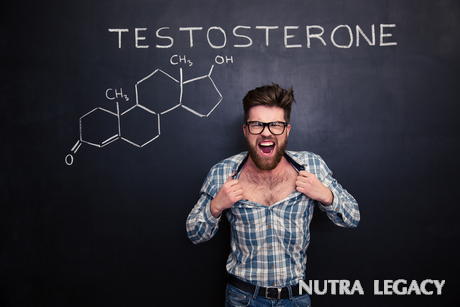All You Wanted to Know about Testosterone and Androgen

- Testosterone is member of the class of hormones called androgens. Androgens are male hormones that are responsible for the development of the reproductive system of males.
- The majority of the testosterone found in the blood is bound to a protein known as sex hormone binding globulin (or “SHBG”).
Testosterone is a member of the class of hormones called androgens. Androgens are male hormones that are responsible for the development of the reproductive system of males. They are also responsible for the male characteristics, such as facial hair and deep voice, known as secondary male sexual characteristics. Testosterone is usually produced in the testes in relatively large quantities in men whereas it occurs in smaller quantities in women (produced in the ovaries). It is also made in small quantities in the adrenal gland in both women and men.
The level of testosterone in the blood can be checked through a testosterone test.
The levels of testosterone in the body are regulated by the pituitary gland. If the level of testosterone is low, the pituitary gland instigates the release of a hormone known as luteinizing hormone (LH). This hormone stimulates the testicles to produce more testosterone.
Prior to reaching puberty, levels of the testosterone in boys are usually low. During puberty, testosterone production increases, causing boys to develop secondary male sexual characteristics, specifically greater musculature, sperm production, deep voice development, and the development of more body hair and facial hair. Levels of testosterone in the male body peak at around 40 years of age, and then gradually decreases as age increases.
The ovaries produce around half of the testosterone in the female body. Levels of testosterone are much smaller in women relative to men. However, testosterone plays an important part in the health and well being of both women and men. Testosterone has an important effect on bone, fat distribution, muscle mass and brain function. It also effects energy levels, the vascular system, sexual functioning and genital tissues.
The majority of the testosterone found in the blood is bound to a protein known as sex hormone binding globulin (or “SHBG”). Levels of unbound testosterone or “free testosterone” can also be tested, and often is if a woman or a man is experiencing problems of a sexual nature.
A test to check the levels of testosterone in the body may also be carried out for the following purposes:
1. Where there are difficulties with a man attempting to father a child. A low sperm count can be caused by low levels of testosterone.
2. Low levels can adversely effect sex drive, and may even cause erectile dysfunction. Low levels of testosterone can also effect sex drive in women.
3. A test may check for high levels of testosterone in boys under the age of 10 where there are signs of early puberty.
4. High levels of testosterone can cause women to develop male features, for example a deep voice or excessive bodily and/or facial hair.
5. A testosterone test may be necessary in women where menstrual periods are irregular.
6. A testosterone test may be carried out in order to determine the possible cause of osteoporosis in men.
7. Testosterone levels will be closely monitored in men with advanced prostate cancer in order to check if medicines designed to lower levels of testosterone are working.
The information supplied in this article is not to be considered as medical advice and is for educational purposes only.
 12 Jan 2009 12 Jan 2009 |

If you want to know whether you have testosterone deficiency or not visit the webpage I have posted and have a read because they have online t-level test.February 16th, 2010 at 8:03 am